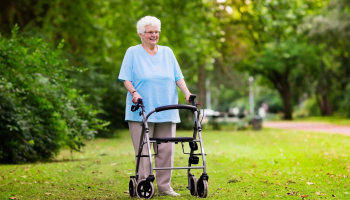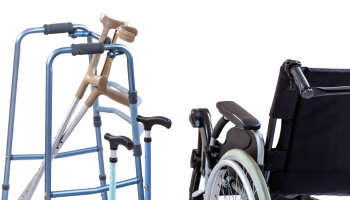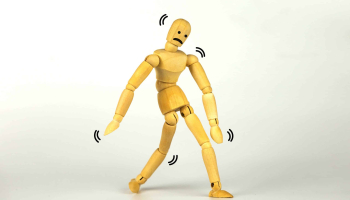Parkinson’s disease is a disorder of the central nervous system resulting from lack of enough dopamine chemical production which regulates movement from the brain cells. It develops gradually from one side of the body with a slight tremor, after some time it may spread to both sides accompanied by slowing movement, muscle rigidity, and deterioration in coordination and balance. Although there is no cure for this disease it’s manageable.
While Parkinson’s disease dementia is a brain disorder that results from some people living with Parkinson disease. In addition, there are other two types of dementia; Lewy Body dementia and Alzheimer’s. Brain cell damage can result in loss of cognitive functions like fast-thinking, problem-solving, and memory loss. These changes in behavior and thinking can influence your independence, daily living, and relationships.
When you are diagnosed with Parkinson’s disease it’s stressful for both you and your family. More so the potential of developing dementia will increase these anxieties. But no matter what stage the disease is, there is something you and your family can do to manage the symptoms and gain independence to continue enjoying a full life.
In our article, we will discuss some of the exercises you can do to maintain body balance, stability, and keep fit when battling these diseases. Engaging in daily exercises enhances physical movements by maintaining a connection throughout the central nervous system. The following activities will really help senior people battling dementia and Parkinson’s disease.
1. Walking
Walking promotes balance and physical body rhythm. You should encourage your loved one by going with them for a walk in a nature park where he or she can enjoy nature, nearby park or around your block. You can also consider going shopping and parking away from the entrance.
If your loved one is unstable while ambulating, he or she can use either a cane, walker, or a rollator. Start slow and allow him or her to walk at his or her own pace. As they get stronger increase the length and intensity of the journey.
2. Singing
Parkinson’s disease affects speech muscle. Gradually the speech becomes slower and the voice becomes quieter. Singing strengthens the voice muscles, hence seniors with Parkinson disease can have improved vocal clarity and quality by singing for one hour, a few times each week.
In addition, singing out loud improves vocal volume. Always encourage your loved ones to sing out loud along with their favorite songs. Moreover, you can consider singing along karaoke machines and joining the choir. It’s important to note, the more you sing the stronger your voice becomes.
3. Tai Chi
Tai chi is a great exercise practiced by elders around the world to increase physical balance and promote inner peace. It was once part of Chinese martial arts culture. This martial art exercise involves controlled breathing and proper posture with slow movements.
While engaging in tai chi exercise participants transfer their weight from one leg to the other continually, making different arm movements. Seniors who engage in this activity are able to lift their feet and legs while walking. Hence, promoting gait and preventing tripping and falling.
4. Swimming
Swimming is the best activity to enhance overall muscle strength and remove weight-bearing stress on joints. The resistance you encounter while submerged in water can reduce pain and muscle stiffness. Different strokes while swimming enhances muscle coordination and motor skills.
5. Yoga Exercise
Yoga exercises help seniors to control their breathing. Also, this activity helps to strengthen muscles throughout the body, and enhance balance. Practicing yoga helps seniors to reduce muscle rigidity and abnormal muscle tightness resulting from prolonged muscle contraction.
You can do this by engaging in community yoga. In case your loved one is a bit unconscious, he or she can do it at home by watching DVDs or watching online videos.
6. Cycling
Cycling is another great exercise for people with Parkinson’s. It helps improve on balance, stability as well as reduce gait freezing. It does not have to be done on a standard bike but could as well be done on a theracycle.
Exercise Tips for Seniors with Parkinson’s Disease
Be safe
Before kick starting any new exercise program, consult your neurologist, physical therapist, and doctor. To get advice on what can work best for you individually. Don’t just jump on something without consulting.
Be Consistent
The best and fastest way to get results out of something is by being consistent. People with Parkinson’s disease, who have been consistent in their exercise program for 6months or more have shown notable improvement compared to people who do shorter programs.
Use a Step Counter
This helps to track the number of steps taken on an average day. And consequently, work on the day-to-day improvement.
Enjoy
If you enjoy something you are most likely to undertake it more. This can be done by either taking group activities or class activities.
Cool Down
Normalizing a proper cool down decreases the heart rate slowly and prevents muscle stiffness. Additionally, don’t forget to do proper warm-up exercises and stretches to promote muscle health.
Great Intensity, Great Results
People with Parkinson’s disease should do exercise often for as long as possible. The amount of exercise per person varies depending on the intensity of their symptoms. But, the more you exercise the more benefits you get.
Variation and integration
It is possible to add exercise to your normal routine without making major changes. For instance
· Avoid staying inactive for a long period of time
· Taking stairs instead of using a lift where possible
· If possible walking instead of driving
Also, if possible changing exercises and where they are taken will not only help improve results but also reduce boredom and increase motivation.
In conclusion, doing exercise is good for your health, but for a person living with Parkinson’s disease, it is very vital to include exercise in your daily routine. However, if you have this condition it’s important to speak with your doctor or advisor, work on a specific group and be consistent.
In addition, it is important to research more about the many Parkinson-specific exercises available. Luckily, you may find a group to work with for support and advice.
Moreover, caring for a Parkinson’s or dementia patient can be a challenging and rewarding experience. Most likely you’ll be adapting to new challenges as the disease progress and new symptoms emerge. Otherwise, you are doing a great job and you should continue with no doubt.








